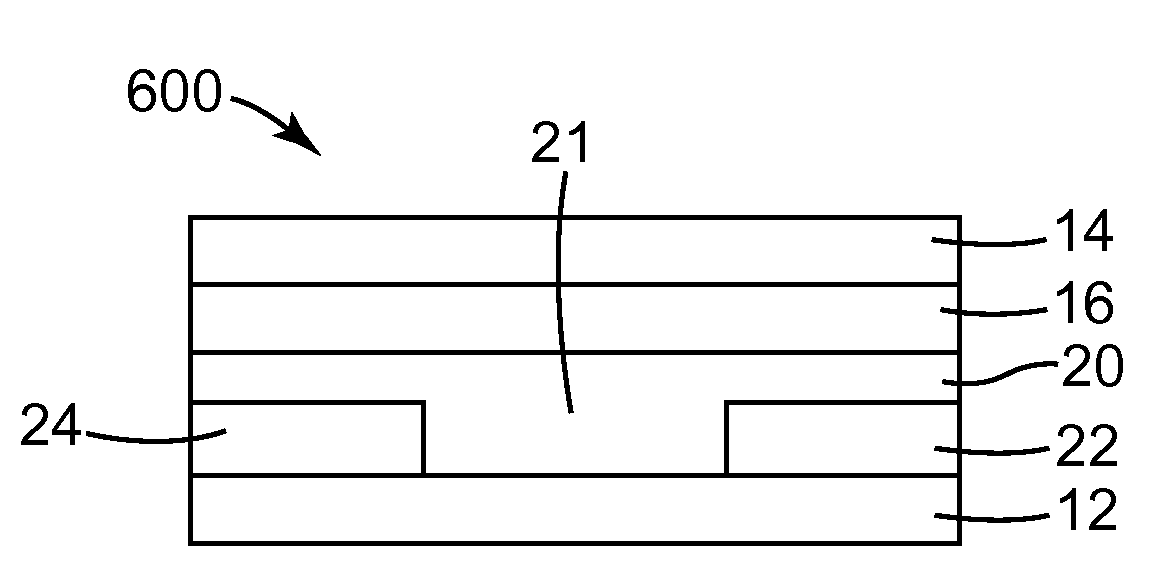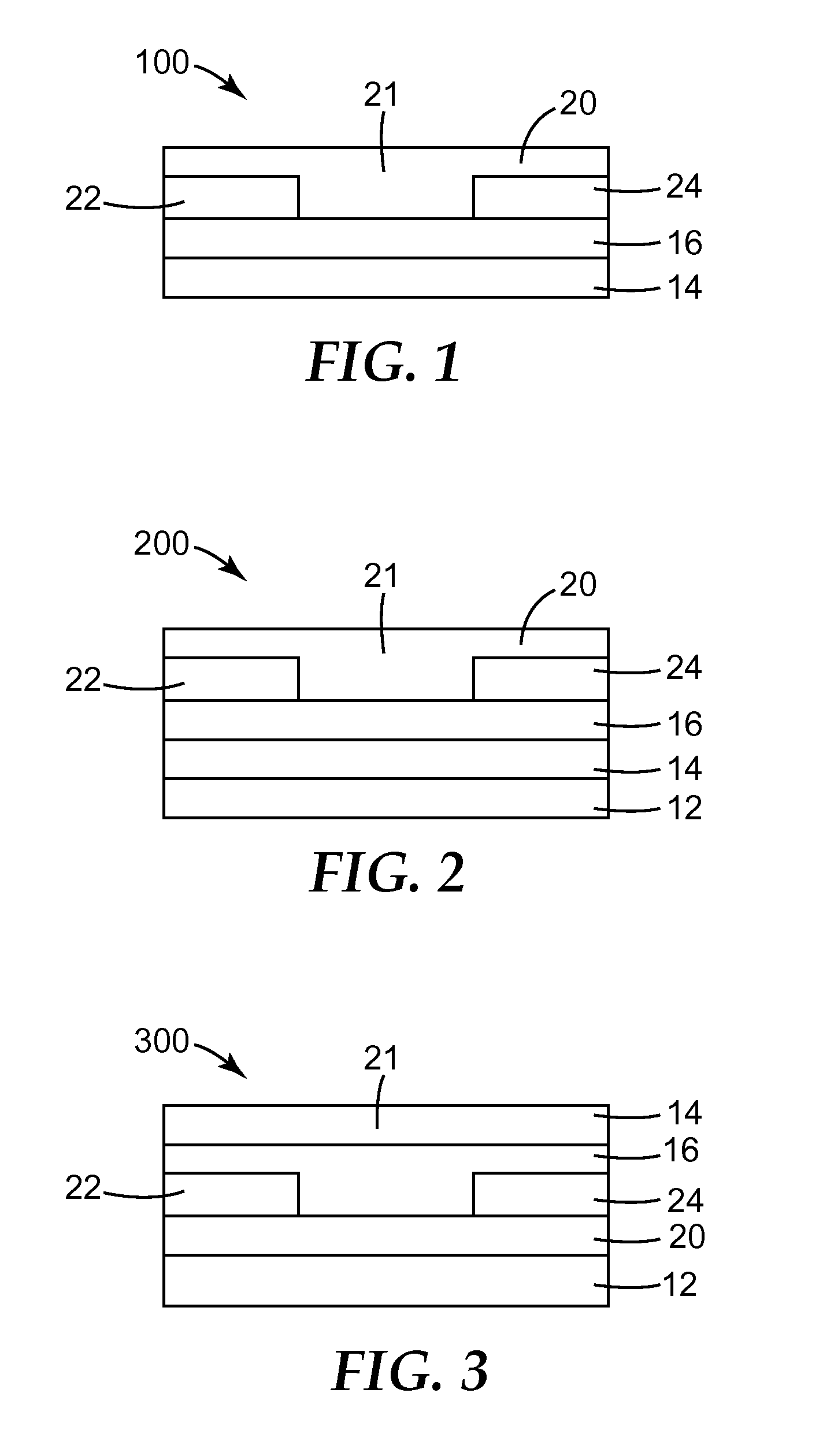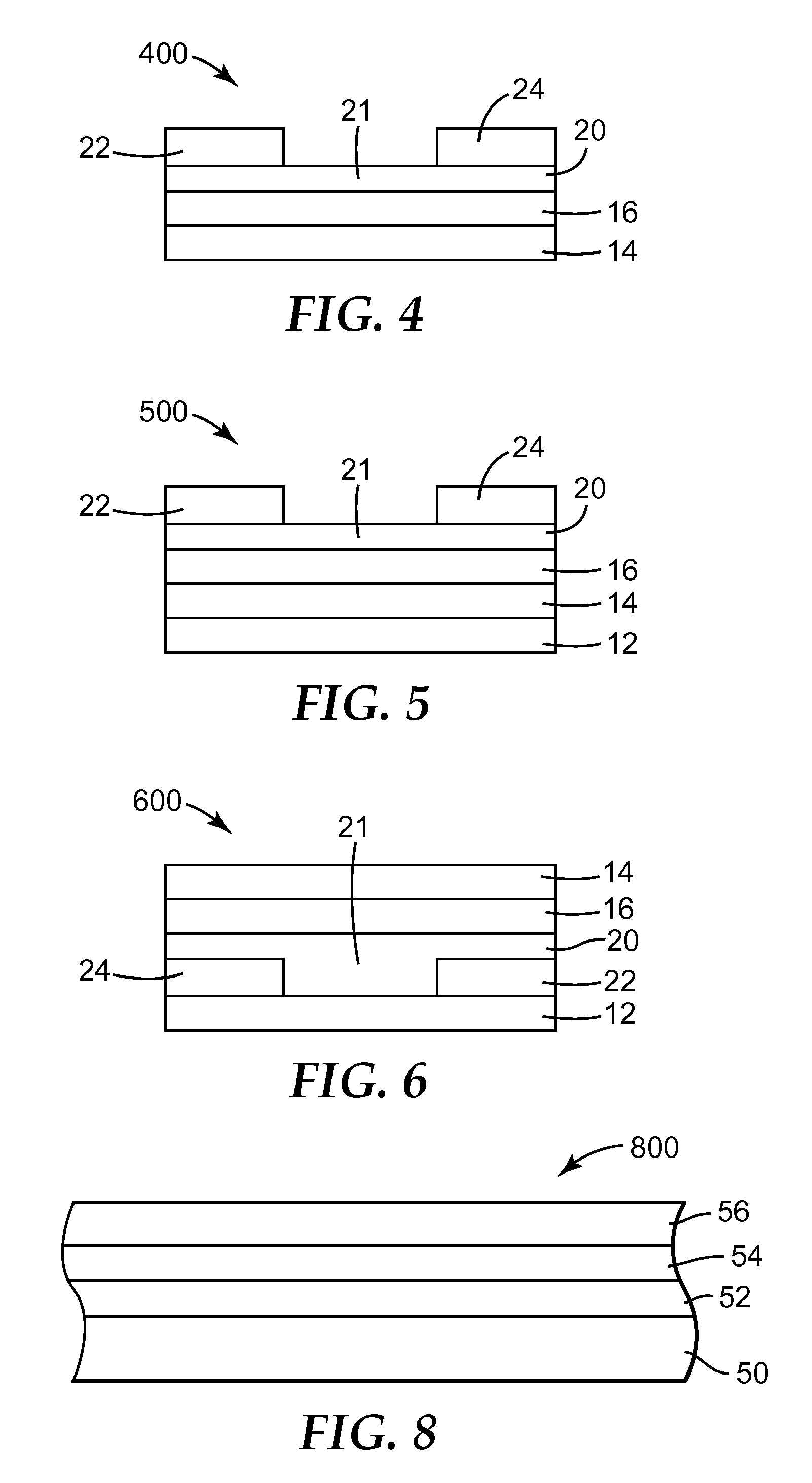Electronic devices containing acene-thiophene copolymers with silylethynyl groups
a technology of acenethiophene and copolymer, applied in the field of acenethiophene copolymer with silylethyl groups, can solve the problem of reducing the performance of electronic devices
- Summary
- Abstract
- Description
- Claims
- Application Information
AI Technical Summary
Benefits of technology
Problems solved by technology
Method used
Image
Examples
preparatory example 1
Synthesis of 2,6-dibromo-9,10-bis[(triisopropylsilyl)-ethynyl]anthracene
[0126] Triisopropylsilylacetylene (12.32 g, 67.5 mmol) and dry hexane (140 mL) were added under a dry nitrogen blanket to an oven-dried round bottom flask (1 L). Butyl lithium (2.7 M in hexane, 14.5 mL, 39.2 mmol) was added dropwise under dry nitrogen through a syringe to the mixture. The mixture was stirred at room temperature for 2 hours. To this colorless solution, dry THF (300 mL) and 2,6-dibromoanthraquinone (5.49 g, 15.0 mmol) were added under dry nitrogen. The solution turned red immediately and the 2,6-dibromoanthraquininone dissolved in minutes. The mixture was stirred at room temperature overnight and the solution became dark red. Deionized (DI) water (6.0 mL) was added, the color changed to light red, and a white precipitate appeared. Tin (II) chloride (8.088 g, 42.6 mmol) in HCl (18 mL, 10%) aqueous solution was then added. The mixture was heated to 60° C. for 2 hours and then cooled to room tempera...
preparatory example 2
Synthesis of 2,6-bis-(4,4,5,5-tetramethyl-1,3,2-dioxaborolan-2-yl)-9,10-bis[(triisopropylsilyl)ethynyl]anthracene
[0127] 2,6-dibromo-9,10-bis[(triisopropylsilyl)ethynyl]anthracene (5.225 g, 7.5 mmol) from Preparatory Example 1, bis(pinacollato)diboron (4.763 g, 18.8 mmol), KOAc (2.940 g, 30.0 mmol), and CHCl3 (100 mL) were charged to a 250 ml flask under dry nitrogen. A yellow solution with suspended KOAc was obtained. The suspension was degassed to remove traces of oxygen. [1,1′-bis(diphenylphosphino)ferrocene]dichloropalladium (0.205 g) was then added under dry nitrogen. The solution turned orange. The mixture was stirred at 70° C. for 3 days and then cooled to room temperature. It was washed with DI water (100 mL×3) and dried over MgSO4. The solvent was removed by rotary evaporation. The solid residue was purified by column chromatography (silica gel, CHCl3) and recrystallized from ethyl acetate. Orange needle crystals were obtained (3.20 g, yield 55%) as the product. 1H NMR (400...
preparatory example 3
Synthesis of poly(3,4-ethylenedioxy-2,5-thiophene-alt-9,10-bis[(triisopropylsilyl)ethynyl]-2,6-anthracene)
[0129] A 250 mL Schlenk flask was charged with 2,6-bis-(4,4,5,5-tetramethyl-1,3,2-dioxaborolan-2-yl)-9,10-bis[(triisopropylsilyl)ethynyl]anthracene (1.552 g, 2.00 mmol), 2,5-dibromo-3,4-ethylenedioxythiophene (0.600 g, 2.00 mmol), sodium carbonate (1.060 g, 10.0 mmol), ALIQUAT 336 (0.241 g), distilled water (10 mL), and toluene (100 mL). The mixture was degassed three times under nitrogen using a Schlenk line to remove oxygen. Tetrakis(triphenylphosphine)palladium(0) (0.025 g, 0.02 mmol) was then added under dry nitrogen flow. After degassing one more time, the mixture was stirred under dry nitrogen at 90° C. for 46 hours. To end cap the copolymer, additional 2,6-bis-(4,4,5,5-tetramethyl-1,3,2-dioxaborolan-2-yl)-9,10-bis[(triisopropylsilyl)ethynyl]anthracene (0.015 g) was added, followed 24 hours later by bromobenzene (0.5 mL). The solution was stirred another 24 hours and cool...
PUM
| Property | Measurement | Unit |
|---|---|---|
| Percent by mass | aaaaa | aaaaa |
| Weight | aaaaa | aaaaa |
| Electrical conductor | aaaaa | aaaaa |
Abstract
Description
Claims
Application Information
 Login to View More
Login to View More - R&D
- Intellectual Property
- Life Sciences
- Materials
- Tech Scout
- Unparalleled Data Quality
- Higher Quality Content
- 60% Fewer Hallucinations
Browse by: Latest US Patents, China's latest patents, Technical Efficacy Thesaurus, Application Domain, Technology Topic, Popular Technical Reports.
© 2025 PatSnap. All rights reserved.Legal|Privacy policy|Modern Slavery Act Transparency Statement|Sitemap|About US| Contact US: help@patsnap.com



